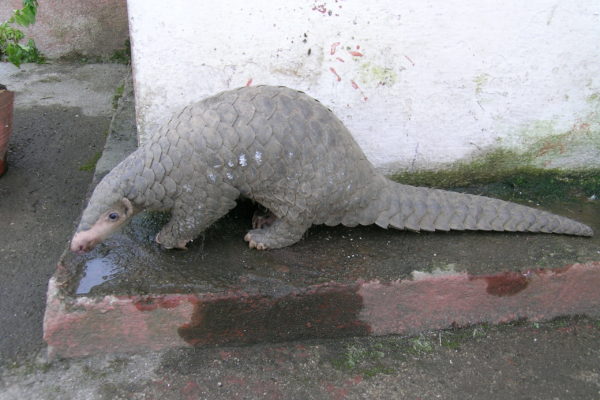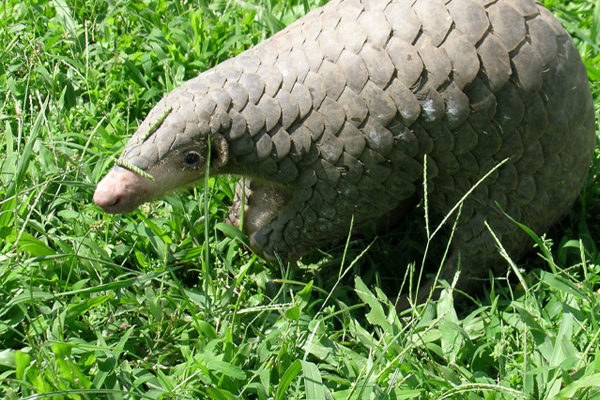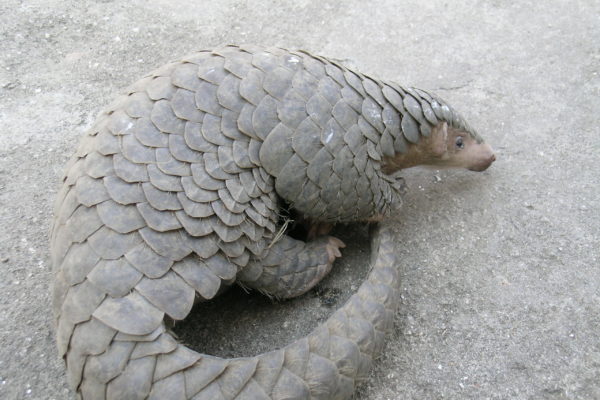Distribution
Brunei Darussalam; Cambodia; Indonesia; Lao People’s Democratic Republic; Malaysia; Myanmar; Singapore; Thailand; Viet Nam.
Reproduction
Sunda pangolins usually only have one offspring after a gestation period of between 6 and 7 months. Females reach reproductive maturity towards the end of their first year.
Distinguishing characteristics
The Sunda pangolin is the most widely distributed species of pangolin in Southeast Asia. While its geographic range overlaps with that of the Chinese pangolin, it can be distinguished by fewer rows of scales across the back, shorter forelimb claws, and a longer more slender tail. It also leads a more arboreal lifestyle than the Chinese pangolin. Populations of pangolins in the Philippines were until recently considered to be Sunda pangolins, but are now recognized to be the distinct Philippine pangolin. Sunda pangolins have fewer scale rows across the back than the Philippine pangolin, along with larger scales and a longer head and body to tail length ratio.
Facts
The Sunda pangolin has a long history of being traded internationally. In Asia it has the undesirable status as the mammal most frequently found in illicit trade. Sunda pangolin scales are predominately dark brown in colour, though they are frequently found with ‘white’ scales on their tails; the reason for this characteristic is unknown (yet!).





